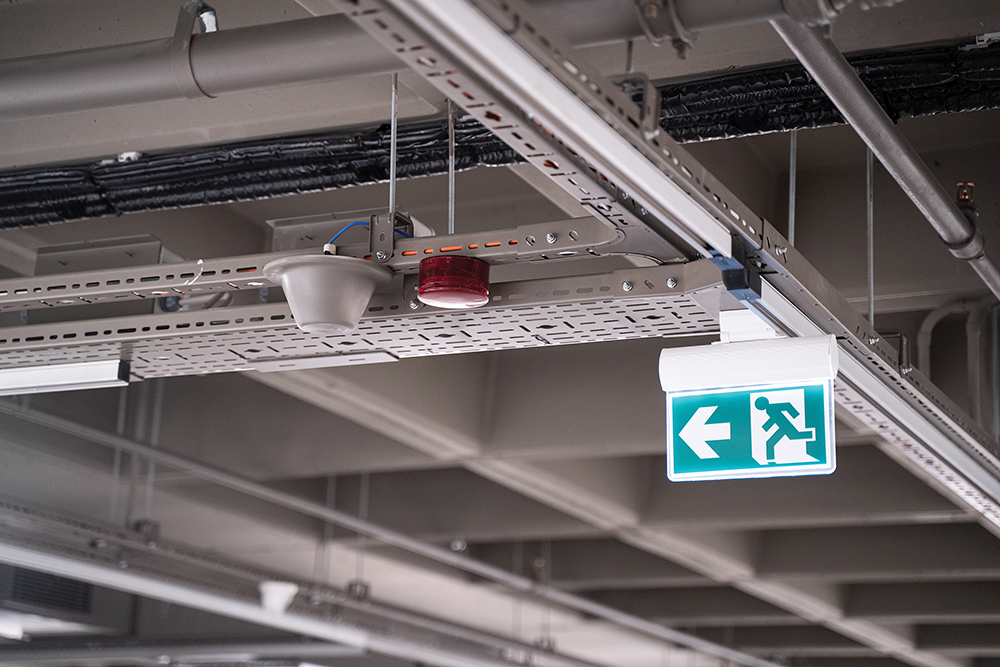 This article will discuss seals. Not the cute furry ones, but the kind you need to reduce fire and explosion risks in locations containing flammable and explosive gases or vapours.
This article will discuss seals. Not the cute furry ones, but the kind you need to reduce fire and explosion risks in locations containing flammable and explosive gases or vapours.The Canadian Electrical Code, Section 0 defines the requirement for conduit seals — to prevent passage of an explosion from one portion of the conduit system to another and that minimizes passages of gases or vapours at atmospheric pressure. The last two words of this definition imply that less dangerous amounts of gases or vapours at higher than atmospheric pressure may pass through the seals.
A Class I Zone 1 location is one in which an explosive gas atmosphere may exist in normal operation. Rule 18-108 requires conduit seals in Class I Zone 1 hazardous locations where conduit enters an explosion-proof or flame-proof equipment enclosure within 450 mm (17.72 in.) of equipment that may produce sparks, arcs, or high temperatures. You will recall that explosion-proof and flame-proof enclosures are capable of withstanding internal explosions and preventing ignition of the specified gases or vapours surrounding the electrical equipment. Where the enclosures contain only terminals, taps or splices, conduit seals are required only for conduit trade size 53 or larger.
Conduit seals are necessary to prevent explosions from passing through the conduit and, importantly, from a classified hazardous to a non-hazardous location. To reinforce this requirement, Rule 18-108 specifies conduit seals where conduit leaves a Class I Zone 1 hazardous location with no boxes or fittings between each seal and the point where the conduit leaves the hazardous location.
Section 0 defines a cable seal as one installed at a cable termination to prevent the release of an explosion from an explosion-proof enclosure and that minimizes the passage of gases or vapours at atmospheric pressure. As discussed earlier, this implies that less dangerous quantities of gases or vapours at higher than atmospheric pressure may pass through the seals. Rule 18-108 requires that cable seals be provided in Class I Zone 1 hazardous locations where a cable enters an explosion-proof or flame-proof enclosure or terminates in a Zone I location. Only cables approved for hazardous locations must be installed.
Conduit and cable seals are also required to prevent pressure-piling. When an explosion occurs in hazardous location equipment without a conduit seal, due to presence of flammable gases or vapours inside the conduit, a series of internal explosions may occur along its length. Each subsequent explosion raises the pressure inside the conduit to the point where the equipment enclosure at the far end of the conduit may be destroyed. Pressure-piling can be prevented by sealing the conduit. Sealing of cables is also highly important since cables are not tested or designed to withstand an internal explosion.
Rule 18-000 defines a fluid as a substance in the form of gas, vapour or liquid. It defines a primary seal as a seal that isolates the process fluids from an electrical system, and that one side of the seal is in contact with the process fluid. For example, sealing of the wiring to a measuring device inside a pressurized pipeline or enclosed vessel at the point where the wiring exits the pipeline or vessel. Rule 18-072 specifies that primary seals are required to prevent migration of flammable fluids through the wiring system. As earlier indicated, conduit and cable seals are not designed to prevent passage of flammable fluids at higher than atmospheric pressure; therefore, the need for primary seals.
Rule 18-000 defines a secondary seal as a seal that is designed to prevent passage of process fluids upon failure of the primary seal. A secondary seal is installed between the primary seal and the conduit or cable seal to back up the primary seal in case the primary seal should fail to contain the process fluid. Rule 18-072 specifies that where a secondary seal is installed, failure of the primary seal must become obvious or marking that the pipeline or vessel may contain flammable fluid under pressure. Some secondary seals may include an alarm circuit to make a primary seal failure obvious.
As with previous articles, you should always consult the electrical inspection authority in each Province or Territory as applicable for a more concise interpretation of any of the above.














Find Us on Socials